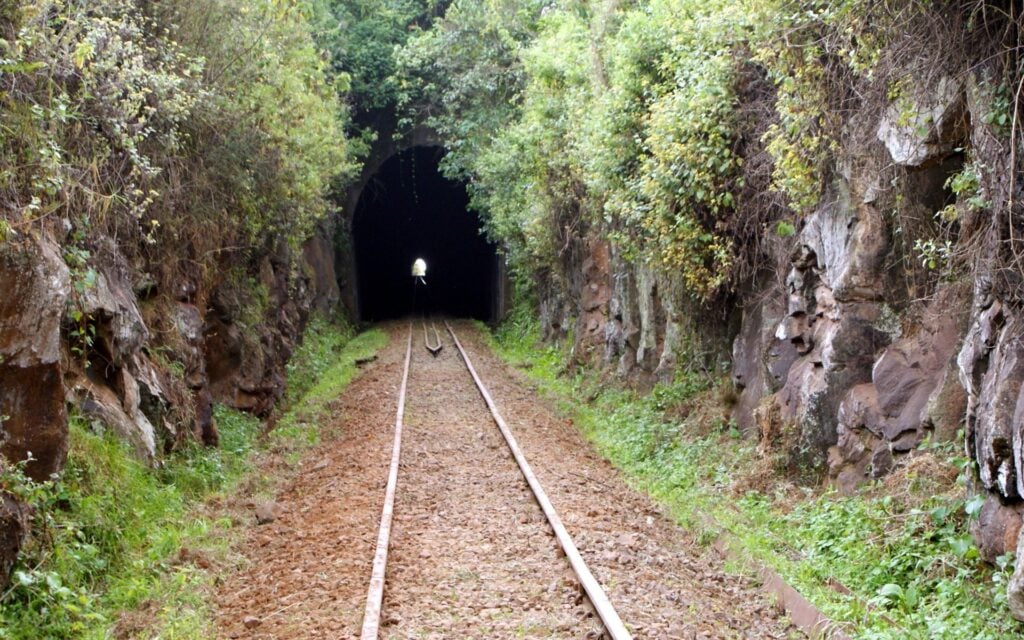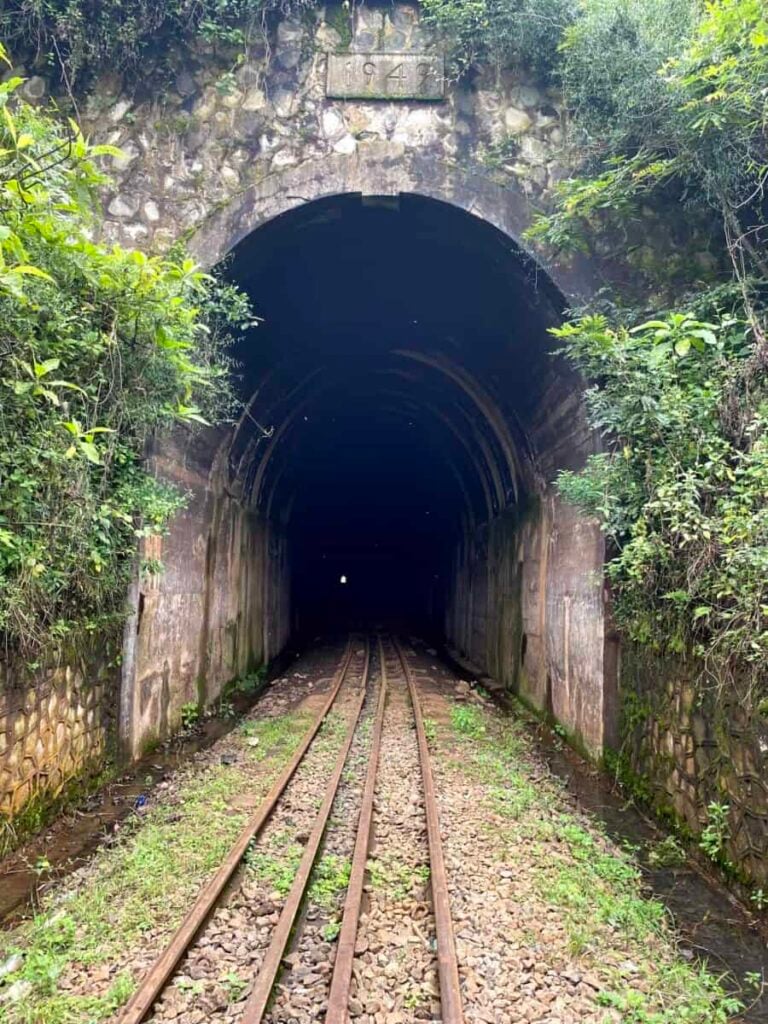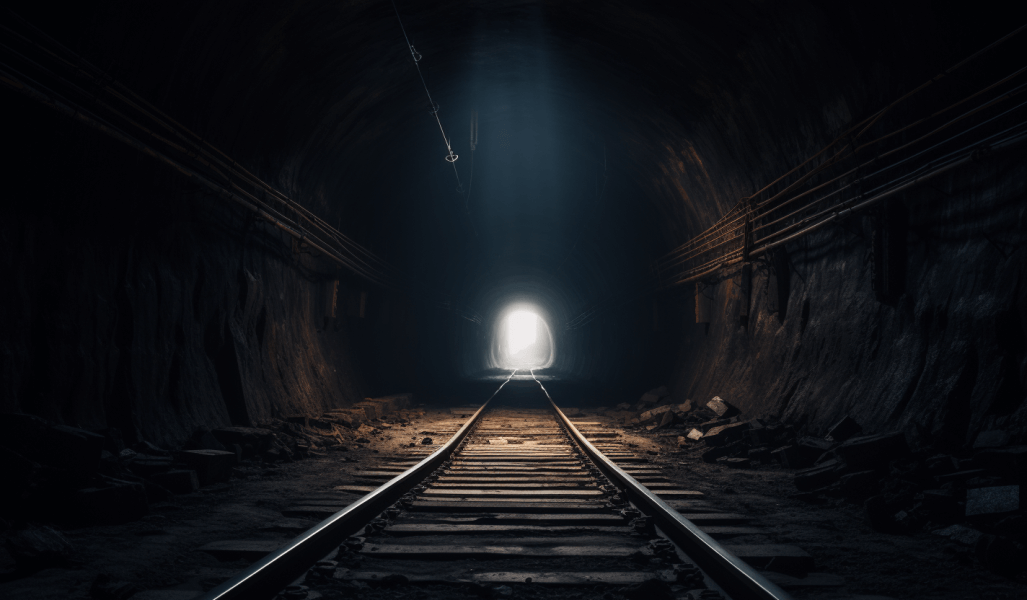Looking for an adrenaline-pumping adventure just an hour’s drive from Nairobi? Allow us to introduce you to the legendary Buxton Tunnel in Kabuku, Limuru.
Table of Contents
A Hauntingly Thrilling Journey
If you have nerves of steel and a fascination for the eerie, then dare to conquer what’s reputed to be Kenya’s second-longest, spookiest, darkest, and most “dangerous” train tunnel.
The Buxton Tunnel, a monumental feat of history and architecture, beckons the brave-hearted. This enigmatic structure, once steeped in infamy and shadows, has emerged from its dark past to become a captivating tourist attraction.
Join us on an immersive journey through the depths of the Buxton Tunnel, where history and mystery meet.
Tales of Haunting and Mystery
The Buxton Tunnel stretches 1.7 kilometers and standing at the entrance of the tunnel, there’s a small light visible at the far end, which adds a dramatic touch to the experience.

However, despite its popularity, only a brave few venture beyond 20 meters into the tunnel due to the complete darkness that engulfs the interior. The tunnel has been shrouded in spooky stories.
Locals share chilling tales of ghosts haunting its depths and robbers finding refuge within. In its dark past, the tunnel witnessed crimes and murders, and it was a no-go zone for the faint of heart.
A Tourists Experience: Walking Across
One daring yet adventurous tourist, Cynthia Kimola, describes her experience at the tunnel.

“As we stood at one end of the tunnel, darkness engulfed us, save for a glimmer of light at the far end, offering a glimmer of hope“. She adds:
- Starting Out: Initially, the 25-minute walk through the tunnel felt manageable, guided by the dim light from the entrance. But suddenly, the light vanished, as if sucked away by an unseen force. Adjusting to the darkness, our senses kicked in, absorbing every detail—the eerie silence, the drip of water, and the faint wind.
- The Middle Bit: Inside, the tunnel curved slightly, trapping us in its murkiness. There seemed to be a stream above, with water seeping through, creating echoes that reverberated loudly. It was a point where darkness and silence pressed in on us, compelling us to move forward.
- Almost Out: Finally, a tiny light at the end began to flicker, offering a sense of relief and accomplishment. It stayed static, urging us forward, like a beacon guiding us home.
- Capturing Our Courage: With the tunnel behind us, we took turns capturing silhouettes and exploring the other side. After around 30 minutes, we re-entered the tunnel, retracing our steps back home.
READ ALSO: Fourteen Falls in Thika – Kenya’s Disappearing Beauty
Police Escort: A Must for Safety
Due to the tunnel’s dark history, a police escort is essential for safety.
About the Buxton Tunnel
The Buxton Tunnel is a historic marvel that is part of a larger railway network and dates back to 1940. It was affectionately known among locals as “Kimungu kia mbugi“. It was one of the longest and oldest train tunnels in the country before being surpassed by the SGR Ngong tunnel.
Despite its haunted reputation, the Buxton Tunnel continues to play a vital role in Kenya’s railway system. Cargo trains, laden with goods, traverse its length, ensuring that the tunnel remains an integral part of the country’s transport network.
Directions to Buxton Tunnel From Nairobi
Personal Transport
Drive to Limuru from Nairobi. Use Google Maps for directions.
Public Transport
From Nairobi’s Koja Stage, board a matatu (number 114) to Limuru. The journey takes about an hour, and you’ll be dropped off near St. Paul’s University. The fare ranges from Ksh 100 to Ksh 150, depending on your negotiation skills.
What to Wear and Carry to Buxton Tunnel
Wear Layers: Limuru’s cold climate may require layering. Sturdy shoes are essential for walking along the tracks, protecting your feet from small stones and weather conditions.
Carry:
- A camera or smartphone to capture your journey.
- Snacks and water for the trip.
- An umbrella or waterproof jacket in case of rain.
Historical Background
The British engineer George Whitehouse envisioned connecting Mombasa Port with Lake Victoria. Despite facing opposition and numerous challenges, including wildlife attacks, diseases, and drought, the railway project received British government backing. The rail route became infamous as the “Lunatic Express.”
After numerous setbacks and costs that shocked the British government, Charles Elliot, a British East Africa commissioner, called off the project. However, the Buxton Tunnel, a two-kilometer-long marvel, remained.
READ ALSO: Tourism Season: Discover the Top 5 Rated Hotels in Kenya
Disclaimer: The Buxton Tunnel is a thrilling but potentially dangerous location. Visitors are advised to exercise caution and adhere to safety guidelines.



